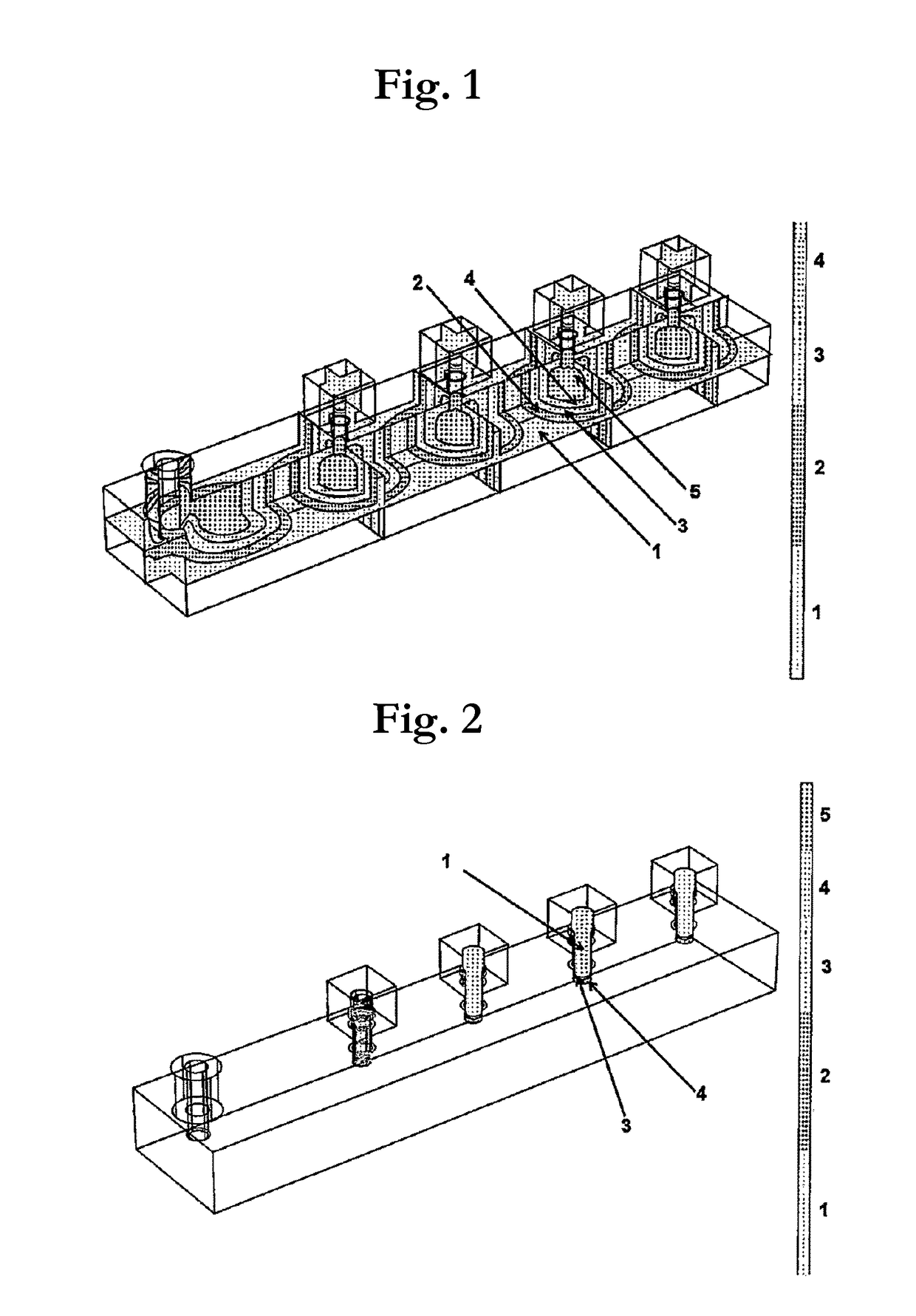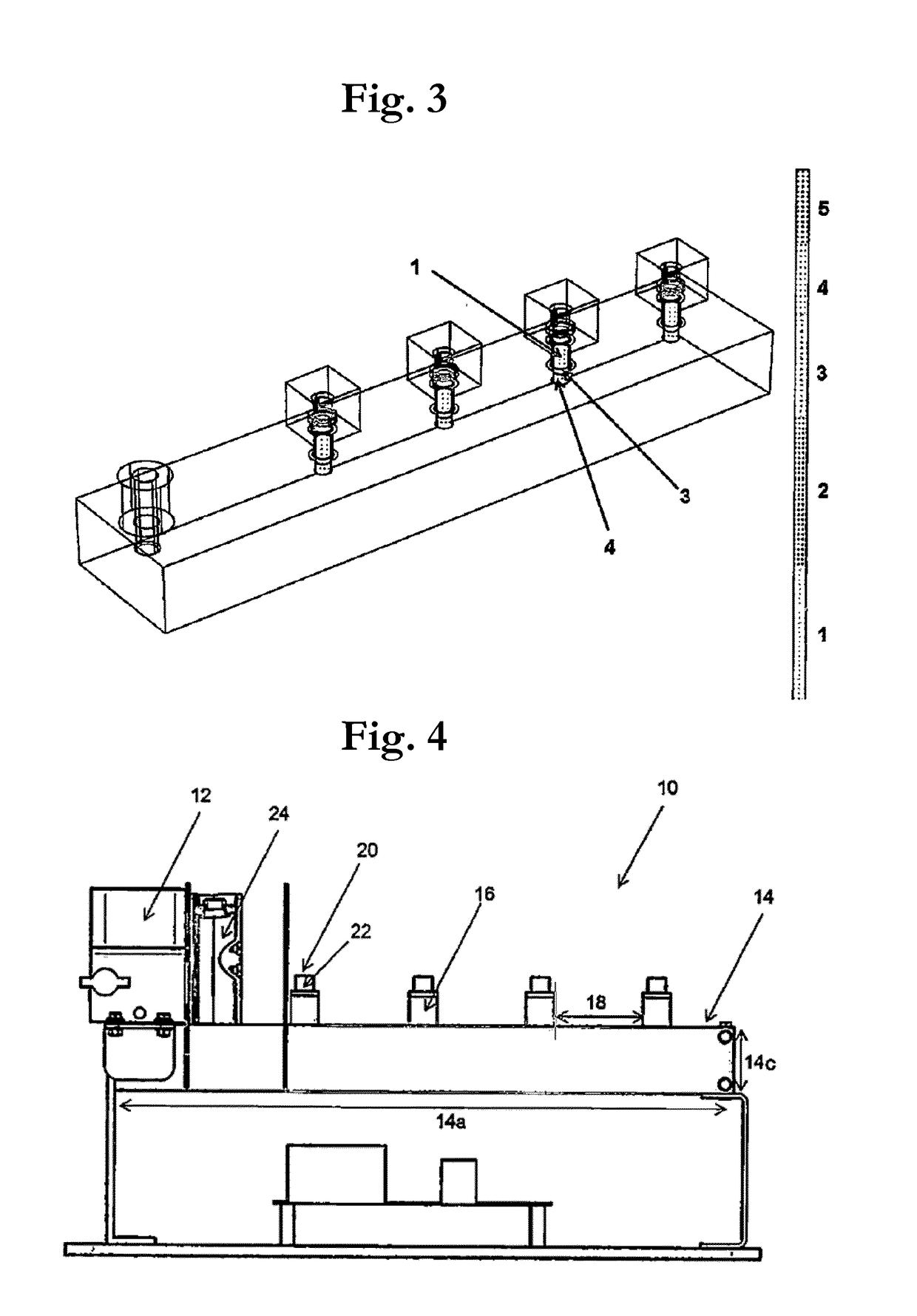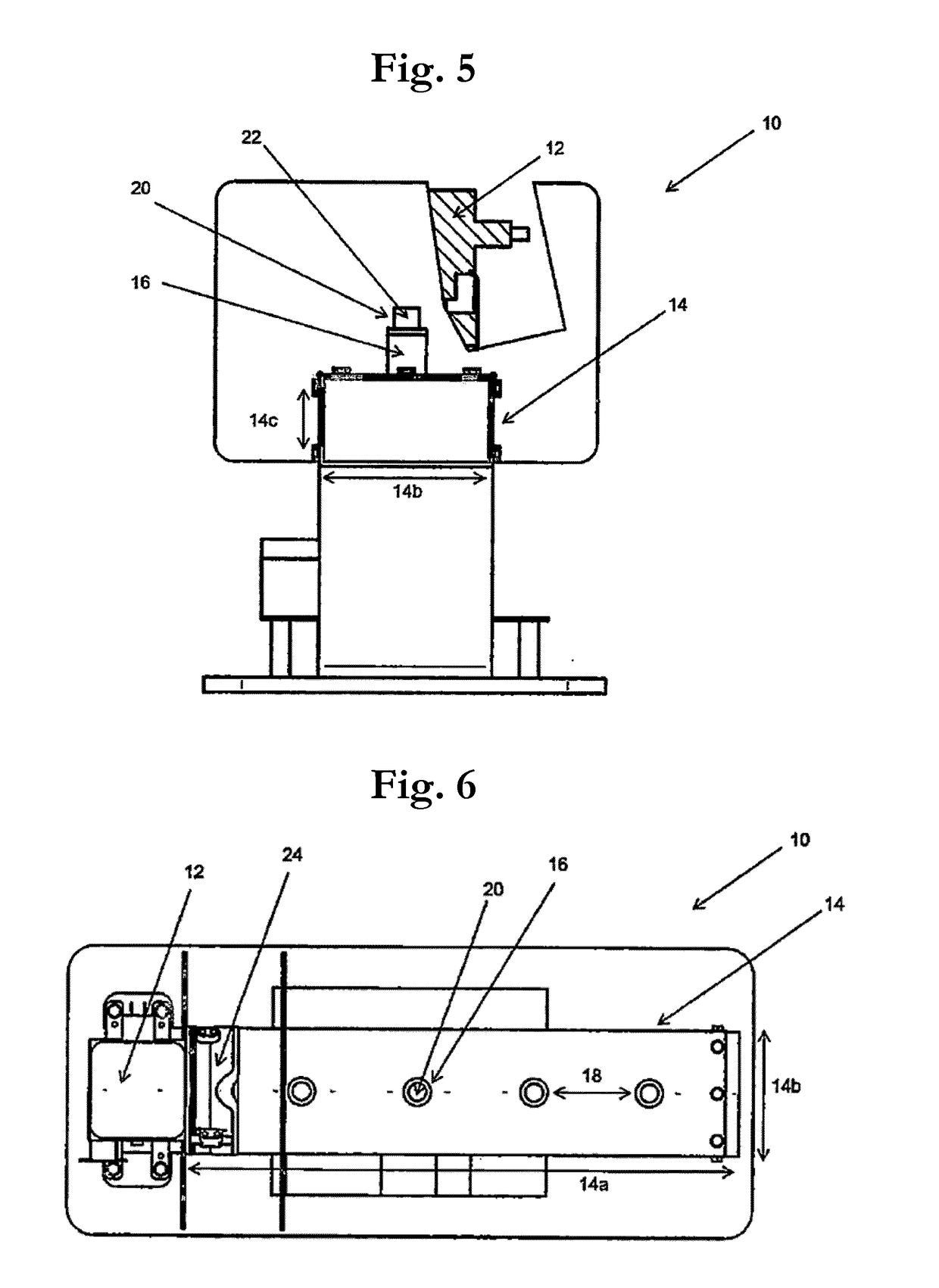Apparatus and method for converting electromagnetic radiation into thermal energy
- Summary
- Abstract
- Description
- Claims
- Application Information
AI Technical Summary
Benefits of technology
Problems solved by technology
Method used
Image
Examples
example 1
Apparatus and Composition for DNA Extraction
[0077]A closed cuboid chamber made of aluminum was built by conventional methods, having the following dimensions: length 45 cm; width 10 cm; and height 5 cm. One opening was drilled at the upper part of the chamber at one chamber's end to allow microwaves entering the chamber. A magnetron was used for generating microwaves. The magnetron was attached at the side with the opening so that microwaves could be generated and, immediately after, propagated through the opening into the chamber. The magnetron having a corresponding power supply was operated at a frequency of 2.45 GHz. A cooler (ventilator) was positioned closed to the magnetron for reducing the excessive temperature of the instrument upon operation. Four further openings separated by 9 cm each were drilled onto the upper part of the chamber. Next, a cylindrical metal piece of 2.5 cm with a diameter of 1 cm was soldered onto every opening. In order to tightly accommodate sample tu...
example 2
Microwave-Mediated Processing of Food Samples
[0081]DNA extraction: 100 g of sample was obtained and mechanically homogenized using a grinder or mixer with rotating knifes. 200 mg homogenous sample was transferred into a 2 ml (microwave-transparent) plastic vial with screw cap or snap-lock using a spatula or pipette. A DNA extraction tablet according to Example 1 was added together with 1 ml aqua dest. After closing the vial, the tube was vortexed for 3 seconds and spinned down shortly to remove any liquid from the cap of the vessel. The vial containing the sample and the composition for DNA extraction was closed by screwing a screw cup onto the vessel and placed onto the stationary spots of the apparatus according to Example 1.
[0082]Next, the magnetron was operated and, thereby, the samples were irradiated with microwaves. None of the samples containing the “salt” tablet burst at any time period. All attempts to microwave samples without the tablet according to the disclosure result...
example 3
Conventional CTAB DNA Extraction
[0086]For comparative purposes, the homogenized samples were subjected to the standard CTAB genomic DNA extraction protocol. To this end, 100 ml CTAB lysis buffer was prepared by mixing 2.0 g CTAB (hexadecyl trimethylammonium bromide), 10.0 ml 1 M Tris pH 8.0, 4.0 ml 0.5 M EDTA pH 8.0, 28.0 ml 5 M NaCl, 40.0 ml H2O. The pH was adjusted with HCl to pH 8.0 and aqua dest. added up to a volume of 100 ml. 2 g homogenized sample was mixed with 10 ml CTAB lysis buffer and 25 μL proteinase K (20 mg / ml) and incubated overnight at 60 degrees Celsius under mild shaking. Following centrifugation at 4000 g, RT for 5 minutes, the first pellet was discarded and the supernatant again centrifuged at 14000 g, RT for 10 minutes. The supernatant was then extracted with an equal volume of chloroform. 600 pi aqueous phase was mixed with 1.2 ml CTAB precipitation buffer (5 g / L CTAB, 0,04 mol / L NaCl), the DNA precipitated at room temperature for 60 minutes, followed by centr...
PUM
| Property | Measurement | Unit |
|---|---|---|
| Temperature | aaaaa | aaaaa |
| Temperature | aaaaa | aaaaa |
| Length | aaaaa | aaaaa |
Abstract
Description
Claims
Application Information
 Login to View More
Login to View More - R&D
- Intellectual Property
- Life Sciences
- Materials
- Tech Scout
- Unparalleled Data Quality
- Higher Quality Content
- 60% Fewer Hallucinations
Browse by: Latest US Patents, China's latest patents, Technical Efficacy Thesaurus, Application Domain, Technology Topic, Popular Technical Reports.
© 2025 PatSnap. All rights reserved.Legal|Privacy policy|Modern Slavery Act Transparency Statement|Sitemap|About US| Contact US: help@patsnap.com



